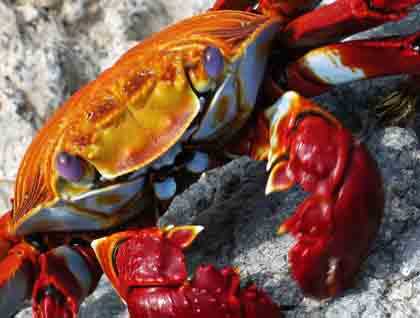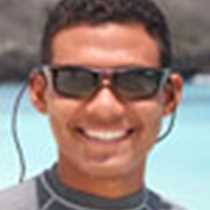We’re halfway through the expedition but more surprises are yet to come on the islands after Santa Cruz.
South Plaza is located on the east coast of Santa Cruz, and it has a completely different ecosystem than the islands we have seen before. It was formed by several uplifts thousands of years ago, proof of which can be seen in the pieces of coral found everywhere.
Since the humans settled on the islands they removed the main predator here, the Galapagos hawk. Without a predator the population of land iguanas has grown to about four hundred and has nothing to stop it. On this island the iguanas patiently wait under the prickly pears the entire day for some leaves, flowers, or fruit to fall.
This small islet next to Santa Cruz also offers one of the best landscapes we’ll see during the trip. There is a forest of prickly pear cactus that keeps its foliage year-round which gives a lovely green color to the area. On the other side, a low plant called Galapagos carpetweed stays red in the dry season, which allows it to maintain the least amount of energy and adds a nice color contrast to the area. We had a nice long walk under the strong equatorial sun here, so after finding all the particular species living here we were ready to head back to the ship for some refreshments.
During the afternoon the ship traveled to Santa Fe, which is just two hours away from Plazas, so everyone could enjoy a brief nap after lunch. The National Geographic Islander anchored just outside of a sandy bottom bay which was the snorkeling site. The temperature of the water was perfect and the marine life was very present. There was many different tropical fish, forming big schools and grazing the algae off the rocks, and some of the first green sea turtles in the trip.
Later we deployed our Zodiacs for some guests who decided to walk on the island and for others who preferred a ride along the shoreline. For the hikers there were sea lions that welcomed them as soon as they landed, followed by a species found only on this island - the Santa Fe land iguana. And for the Zodiac cruisers there were Nazca, blue-footed, and even a surprising red-footed booby.
It was another great day full of excursions on two completely different landscapes, surrounded by exciting wildlife.







